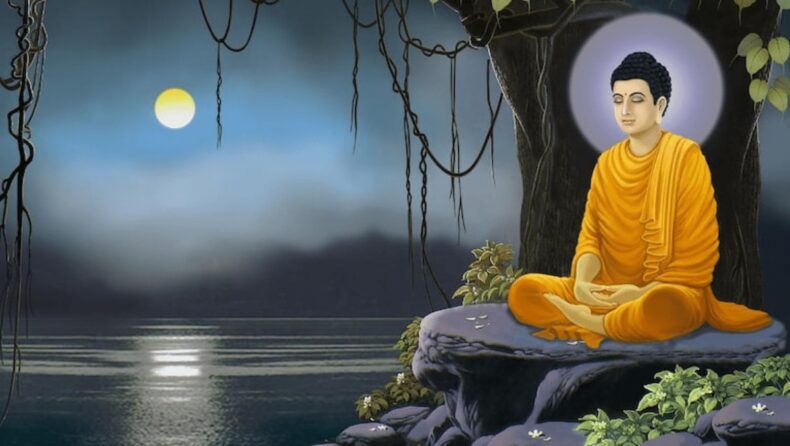When is Buddha Purnima ?
Buddha Purnima is on May 16 this year (in India and Nepal) or May 19 (for those in Southeast Asian countries). The date varies because May has two full moon days, and the Buddhist and Hindu lunar calendars can be interpreted differently. Buddha Purnima is the most sacred day in the Buddhist calendar. It is the most important festival of the Buddhists and is celebrated with great enthusiasm.
The exact date of Vesak is the first full moon in the fourth month in the Chinese lunar calendar. The date varies from year to year in the Gregorian calendar but is typically in May. Buddha Purnima unites Buddhists all over the world for a common cause — to celebrate the three main events of the life of Buddha: his birth, enlightenment, and nirvana. It builds awareness of the teachings of Buddha in a way that respects all cultures.

Significance of Buddha Purnima
Shakyamuni Buddha was the son of the king of the Shakyas, a small clan whose kingdom was located at the foothills of the Himalayas, south of what is now central Nepal, fifteen miles from Kapilavastu. Shakya of Shakyamuni is taken from the name of this tribe and muni means sage or saint. His family name was Gautama (Best Cow) and his given name was Siddhartha (Goal Achieved) though some scholars say this is a title bestowed on him by later Buddhists in honour of the enlightenment he attained.
Even though many Buddhists observe Buddha’s historical birth on 8th April, the exact date remains in question. Although modern archaeological and historical research confirms that Prince Siddartha Gautama lived around this time. The public holiday for Buddha Purnima in India was initiated by B. R. Ambedkar when he was the minister of law and justice.
It is celebrated especially in Sikkim, Ladakh, Arunachal Pradesh, Bodh Gaya, Lahaul and Spiti district, Kinnaur, various parts of North Bengal such as Kalimpong, Darjeeling, and Kurseong, and Maharashtra (where 77% of total Indian Buddhists live), as well as other parts of India as per Indian calendar. Buddhists go to common Viharas to observe a rather longer-than-usual, full-length Buddhist sutra, akin to a service.
One day Mahatma Buddha had a desire to visit Kapilvastu and he took his charioteer along for a stroll. Seeing four scenes on the way, he took a vow to leave home and take sannyas. Because of not finding the Tatvdarshi Saint mentioned in Shlok 1 to 4 of Shrimad Bhagavad Gita Adhyay 15, his life was in vain and he was deprived of complete salvation.
In the followers of Theravada style the dress code is pure white. Kheer, sweet rice porridge is commonly served to recall the story of Sujata, a maiden who, in Gautama Buddha’s life, offered the Buddha a bowl of milk porridge. Informally called “Buddha’s Birthday,” it actually commemorates the birth, enlightenment (nirvāna), and death (Parinirvāna) of Gautama Buddha in the Theravada tradition.
At the Mahabodhi Temple of Bodhgaya in India, Buddha Purnima is celebrated with great enthusiasm. This temple gets decorated with colored decorations. At the Bodhi Tree, under which Gautama Buddha obtained enlightenment, devotees of Gautam Buddha do special prayers. At the National Museum in Delhi, Lord Buddha’s holy remaining’s are open for public viewing.
The dharmachakra or dharma wheel is a symbol often seen during Vesak. It is a wooden wheel with eight spokes. The wheel represents Buddha’s teaching on the path to enlightenment. The eight spokes symbolize the noble eightfold path of Buddhism.
Buddha Purnima all over the World
In India, pilgrimages are made to key places in Buddha’s life and Buddhists avoid eating meat. The Chinese celebrate by visiting pagodas and lighting incense, candles, and lanterns. Japanese celebrates with flowers, ‘Hanamatsuri’ (Flower Festival) is where statues of Buddha are decorated with flowers and bathed with a special flower juice. South Koreans celebrate by giving out free food and lighting up lotus lanterns. Buddhists in Thailand gather in temples and chant prayers together.

The teachings of Buddha
The extent of Buddha’s messages is 84000 suttas.
42000 in abhidhamma pitaka, 21000 in vinaya pitaka and 21000 in Sutta pitaka.

45 years he preached without asking for anything. The way that Ashoka understood the dharma was that all beings should respect each other, based on the foundation of the Buddha’s teachings Angulimala came to kill him, became his disciple. Many people came to insult him. They became his disciple. He stopped wars without picking up any weapon. He spread love, kindness like it was done never before. He showed others how he achieved all this awesome things, he didn’t hold back one bit. He cultivated people like they should be. He told people to not believe his words untill they can experiment with his ideas and find benefit.
Buddhism teaches us a way of life. You don’t have to be a follower of Buddha to appreciate the relevance of his teachings on wisdom, concentration, and discipline, even today. There is something there for everyone, all it requires is an open mind.
Read More : Gyanvapi Row: Hindu side claim ‘Shivling’ found inside mosque













